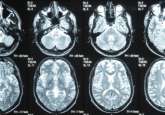Biomarker found to detect Alzheimer’s disease years before symptoms occur

A research team from Europe has found that cases of early-onset Alzheimer’s are connected with increased levels of a certain biomarker in blood plasma, which could mean a simple blood test could diagnose types of Alzheimer’s disease before symptoms appear in patients in the future.
There are many forms of dementia with differing fundamental causes, including autosomal dominant familial Alzheimer’s disease (ADAD) which is defined by the presence of mutations in one of several specific genes. Although it is less common, only covering less than 1% of all Alzheimer’s cases, symptoms occur earlier in life than other forms of Alzheimer’s and thus it is a key concern for those more at risk of the disease.
Currently, three known single gene mutations are associated with early-onset ADAD and, as a dominant trait inherited on non-sex chromosomes, an individual has a 50% chance of inheriting the disease from a parent with the disease. However, genetic testing for the disease is expensive and can be difficult for some to access, so those who have a chance of inheriting the disease must wait for symptoms to develop.
Generally, Alzheimer’s disease, as it stands, has no cure or known cause, which makes it difficult to diagnose with certainty before the death of a patient. Biological changes increase within the background of the brain for years before clear physiological effects begin to appear.
Thus, researchers across the globe have been working to develop a diagnostics test but are limited, as knowing what to target for a clear diagnosis isn’t simple because Alzheimer’s isn’t caused by a single biological pathway. Therefore, many different tests would need to be conducted on a range of biomarkers in order to cover all pathways that could potentially be a factor.
This new study from Sweden presents evidence of a new emerging biomarker, as researchers compared 42 samples to their relatives without a mutation and noticed three biomarkers closely associated with ADAD: plasma phosphorylated tau (P-tau181), neurofilament light chain (NfL) and glial fibrillary acidic protein (GFAP).
You may also be interested in:
- In the Zone: biomarkers and Alzheimer’s disease
- LC–MS/MS assay of fluoropezil and its two major metabolites in human plasma: an application to pharmacokinetic studies
- Poster: companion diagnostics for Alzheimer disease
All three biomarkers are potential indicators of the disease, however, changes to GFAP were found in blood plasma before NfL and P-tau181, 10 years before any symptoms were predicted to occur. GFAP was also found to show up in blood plasma samples before clumps of tau proteins did and are thought to be present in the earliest stages of the disease. Tau proteins have been used to predict the risk of developing Alzheimer’s disease, in the past, with 90% accuracy.
The authors of the study commented:
“This is the first report suggesting that plasma GFAP is one of the earliest blood-based biomarkers in ADAD to our knowledge,”[…]”Our results suggest that plasma GFAP might reflect Alzheimer’s disease pathology upstream to accumulation of tangles and neurodegeneration.”
GFAP is a protein for a neuron termed astrocytes, which are responsible for releasing proinflammatory molecules when encountering amyloid beta plaques in the brain. Amyloid beta (Aβ) protein plaques are a hallmark of some forms of Alzheimer’s disease and preliminary blood tests have used toxic precursors of Aβ proteins to diagnose the disease years before symptoms occur.
GFAP could be an additional route to earlier diagnosis in some cases and potentially the presence of this protein can activate astrocyte activity leading to more Aβ plaques. Additional studies still need to be conducted amongst larger cohorts with replicated findings but the study’s researchers are confident that there is a link between plasma GFAP and brain inflammation.
Charlotte Johansson, neurobiologist from the Karolinska Institutet (Solna, Sweden) stated:
“Our results suggest that GFAP, a presumed biomarker for activated immune cells in the brain, reflects changes in the brain due to Alzheimer disease that occur before the accumulation of tau protein and measurable neuronal damage.”
Charlotte further remarked on GFAP:
“In the future it could be used as a non-invasive biomarker for the early activation of immune cells such as astrocytes in the central nervous system, which can be valuable to the development of new drugs and to the diagnostics of cognitive diseases.”
Sources: Johansson C, Thordardottir S, Laffita-Mesa J, et al. Plasma biomarker profiles in autosomal dominant Alzheimer’s disease. Brain, doi:10.1093/brain/awac399 (2023) (Epub before print), Sciencealert press release, www.sciencealert.com/this-biomarker-can-foreshadow-early-alzheimers-years-before-symptoms





